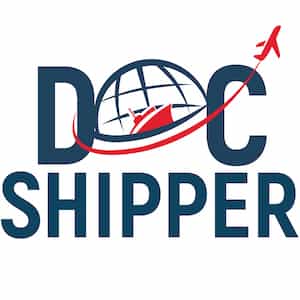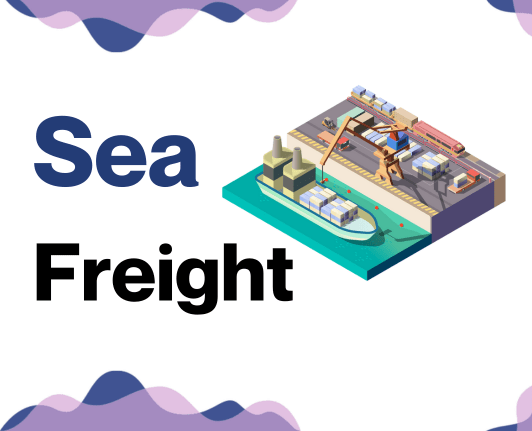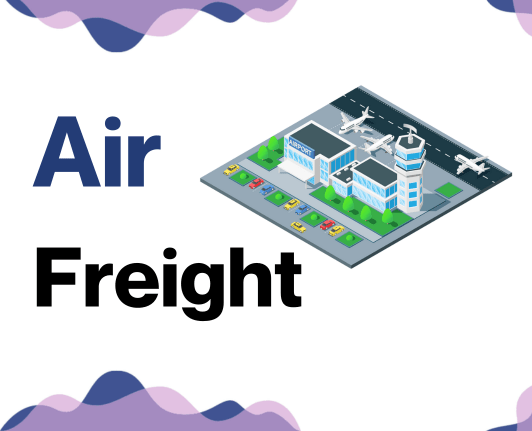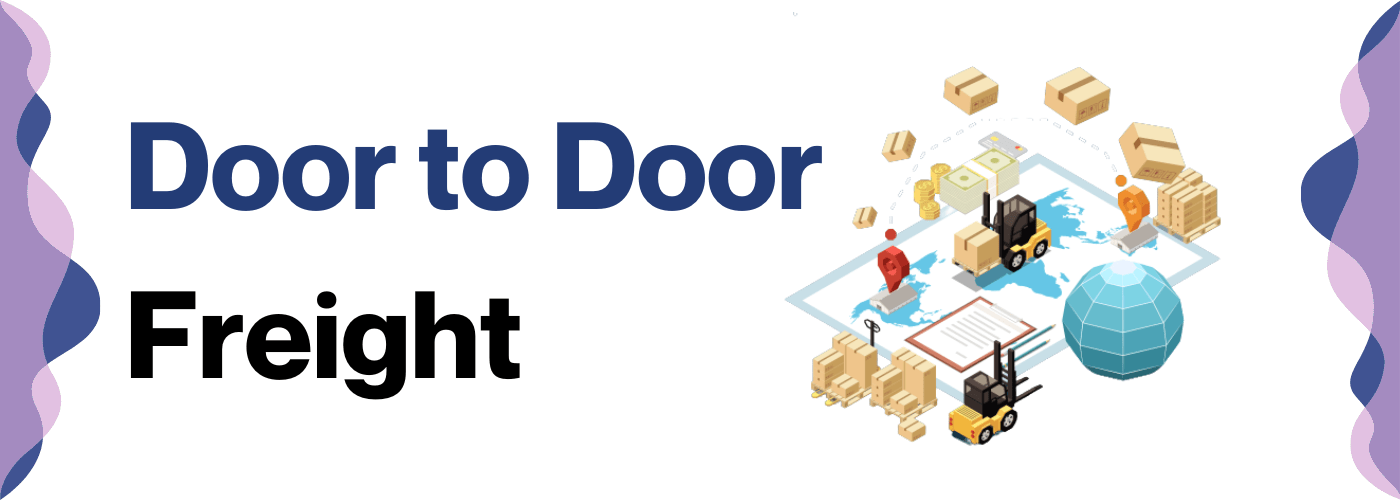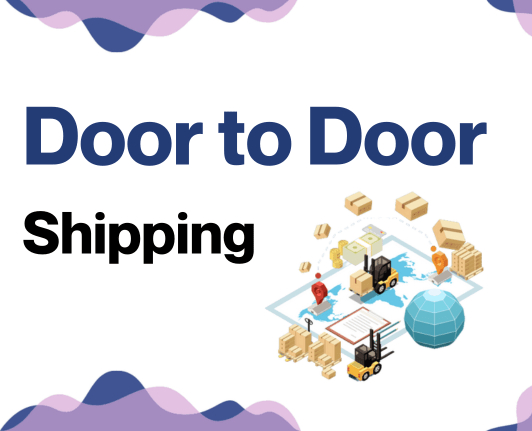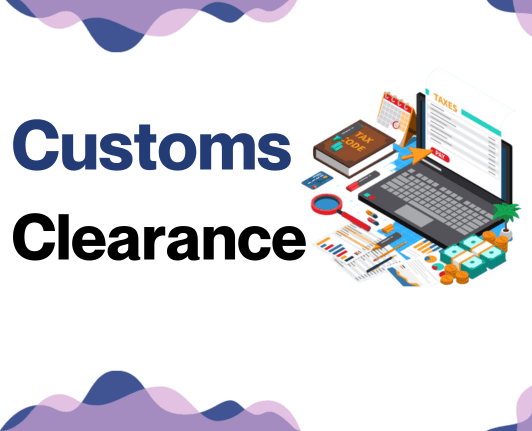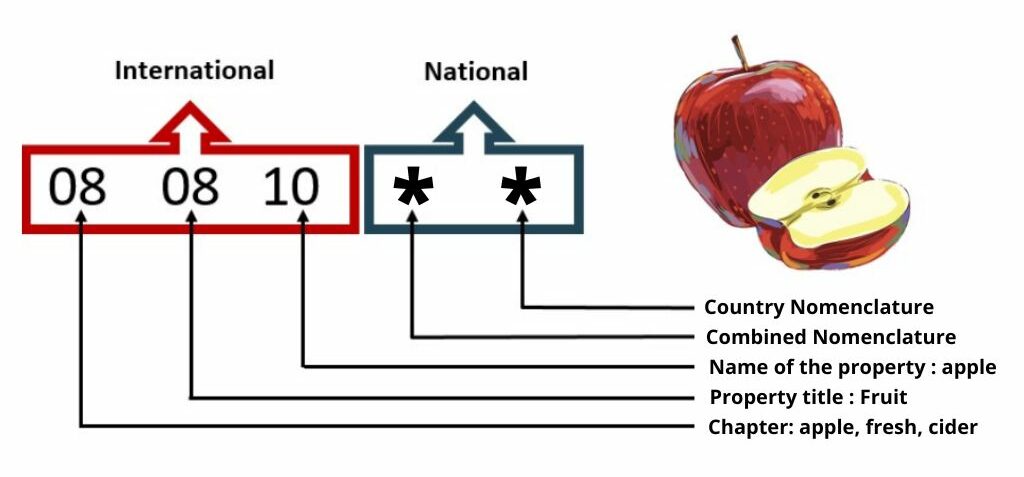Why did the box leave Malaysia for Belgium? Because it had that Brussels sprouts spirit! Jokes aside, getting your freight from Malaysia to Belgium is no laughing matter. In an international landscape filled with fluctuating rates, varying transit times, and unique customs regulations, every piece of information can be crucial for success.
This comprehensive guide offers insights on some of those very topics – from the different types of freight options, the nitty-gritty of customs clearance, duties and taxes, right down to tailor-made advice for businesses looking to bridge the Malaysian-Belgian gap.
If the process still feels overwhelming, let DocShipper handle it for you! As your international freight forwarder, we're committed to ferrying you past these hurdles, making sure your business experiences nothing but smooth sailing in its shipping endeavors.
Table of Contents
Which are the different modes of transportation between Malaysia and Belgium?
Choosing the best way to ship goods from Malaysia to Belgium is quite the journey - think of it like planning a trip and choosing the fastest, most convenient and cost-effective route. Given these countries are roughly 10,000 km apart, air and sea options surge ahead.
The wild ending of the Russia–Belarus border blocks a direct road or rail route. However, your choice still hinges on what you're shipping.
If speed trumps cost, air freight is your 'speedy gonzalez', while sea freight, a slow but hardy tortoise, is ideal for large, heavy shipments. Remember, pairing the right method and route makes a smooth sailing!
How can DocShipper help?
Meet your shipping needs from Malaysia to Belgium effortlessly with DocShipper. Our expertise simplifies your logistics, from cargo handling to customs clearance and timely delivery. Interested in our comprehensive services? Reach out for a free estimate within 24 hours. Still have queries? Give our knowledgeable consultants a free call today.
DocShipper Tip: Sea freight might be the best solution for you if:
- You're dealing with hefty quantities or oversized goods. Sea transport is your go-to for maximizing space without stretching your budget.
- Time sensitivity isn't a concern for your shipment. Ocean freight is known for its leisurely pace, especially when compared to the speed of air or rail.
- Your supply chain connects key international harbors. This positions you to take full advantage of a wide-reaching network of ocean trade routes.
Sea freight between Malaysia and Belgium
Shifting your gaze from the grand Petronas Towers of Malaysia towards the historic cityscape of Belgium, you'll find an invigorating trade relationship flourishing in the heart of the global markets.
Acting as pivotal connective hubs, cargo ports like Port of Klang in Malaysia and Port of Antwerp in Belgium efficiently weave together the industrial centers of both countries. Ocean shipping shines as a prudent choice, particularly for businesses managing high-volume goods, offering cost-effectiveness as its key selling point, albeit at the cost of longer transit times.
Yet, it wouldn't be uncharacteristic for businesses to feel like they're solving a complex jigsaw puzzle when embarking on shipping goods between these nations. Frequent challenges and a steep learning curve often pose a challenge as shippers navigate tricky terrains of transportation specifics and best practices.
But, fear not - this guide aims to dim the high beams of complexity, serving as your compass through the nuances of ocean shipping between Malaysia and Belgium, ensuring your journey is as seamless as the trade waters these nations thrive on.
Main shipping ports in Malaysia
Port Klang
Location and Volume: Port Klang is strategically located on the west coast of Peninsular Malaysia, serving as the country's main port. Annually, it handles approximately 12 million TEUs, making it one of the busiest ports in the world.
Key Trading Partners and Strategic Importance: The port's primary trading partners include China, Singapore, the United States, and Europe. Port Klang plays a vital role in connecting Malaysia to international markets, ensuring imports and exports flow efficiently.
Context for Businesses: If you're seeking to grow in the Southeast Asian market or to venture into China, Europe, or the US, incorporating Port Klang into your logistics strategy will likely be advantageous. Its high volume allows for a broad range of shipping schedules and capacities.
Port of Tanjung Pelepas
Location and Volume: Port of Tanjung Pelepas is located in the southern state of Johor, at the mouth of the Pulai River. This port boasts a yearly volume of over 7.3 million TEUs.
Key Trading Partners and Strategic Importance: Major trading partners include Europe, North America, the Middle East, East Asia, and Australasia. The port is strategically placed along the East West trade route, making it a transit hub for the region.
Context for Businesses: Should you prioritize quick turnaround and transshipment, Tanjung Pelepas might hold significant potential. Its strategic location offers minimized transit times for ships passing through the East West trade route.
Penang Port
Location and Volume: Residing in Malaysia's smallest state, Penang Port is located on the northwest coast of Peninsular Malaysia. Annually, it deals with approximately 1.5 million TEUs, with a major focus on domestic cargo.
Key Trading Partners and Strategic Importance: Notable trading partners include India, China, the US, and Australia. For local businesses, Penang's port is critical, given its focus on national and regional trade.
Context for Businesses: If your business operations are positioned within Malaysia and nearby countries, Penang Port may provide an effective localized shipping solution due to its robust domestic connections.
Bintulu Port
Location and Volume: Lying on Borneo Island's central coast, Bintulu Port is a leading maritime gateway for East Malaysia. Processing a lower volume than others on this list, it still serves as a major port for various specialty goods.
Key Trading Partners and Strategic Importance: The port has a prolific trade relationship with countries seeking Malaysia’s invaluable liquefied natural gas (LNG). It is one of the world's biggest LNG export facilities.
Context for Businesses: If your enterprise focuses on the energy sector, Bintulu Port’s significance in the LNG trade should make it a key consideration for your shipping strategy.
Johor Port
Location and Volume: Positioned on the eastern mouth of the Johor Straits, Johor Port operates as a multi-purpose port, handling approximately 1.3 million TEUs per year.
Key Trading Partners and Strategic Importance: Main trading partners include neighbouring countries like Indonesia, Vietnam, and Thailand. Johor Port acts as a regional hub for bulk and break-bulk cargos.
Context for Businesses: For businesses prioritizing versatility, Johor Port's multifaceted handling capacities, including heavy-lift and project cargoes, can offer a unique advantage in your shipping strategy.
Kuching Port
Location and Volume: Kuching Port, situated at the Sarawak River, serves as the primary port of East Malaysia. Smaller in volume but vital to the region, it handles about 1 million TEUs a year.
Key Trading Partners and Strategic Importance: Trading primarily with nearby Asian countries, Kuching Port holds a vital role in the domestic and regional trades, particularly for Sarawak's timber and palm oil exports.
Context for Businesses: Kuching Port could be pivotal to a shipping strategy focused on industries common in East Malaysia, like timber and palm oil. Its dedicated facilities and handling expertise for these commodities provides a niche advantage.
Main shipping ports in Belgium
Port of Antwerp
- Location and Volume: Situated in the heart of Europe, the Port of Antwerp plays an indispensable role in international trade, handling over 238 million tonnes of maritime freight annually.
- Key Trading Partners and Strategic Importance: The USA, China, Brazil, India, and Russia are leading trade partners. The port is internationally recognized for its exceptional productivity and serves as a notable hub for both containerized and breakbulk goods.
- Context for Businesses: If you're seeking to serve European markets on a large scale or import from major global economies, Antwerp's outstanding freight handling capabilities and broad hinterland connectivity may significantly optimize your logistics chain.
Port of Zeebrugge
- Location and Volume: Positioned on the coast of the North Sea, the Port of Zeebrugge is an essential gateway for cargo movement in Europe, boasting a shipping volume of over 50 million tonnes per year.
- Key Trading Partners and Strategic Importance: Major trading partners include the USA, Norway, and Russia. Also, Zeebrugge is a primary automotive and ro-ro hub, securing its strategic importance in international vehicle trade.
- Context for Businesses: If ro-ro or vehicle-related commodities form a considerable part of your shipment portfolio, Zeebrugge's specialized infrastructure and routes could help streamline your transportation processes and reinforce your global supply chains.
Port of Ghen
- Location and Volume: Based along the Ghent-Terneuzen Canal, the Port of Ghent processes over 38 million tonnes of goods annually, largely serving the industrial sector.
- Key Trading Partners and Strategic Importance: Among the top trading partners are Russia, Canada, and the USA. Ghent is highly significant due to its specialization in various industrial goods, particularly paper and cellulose, and project cargo.
- Context for Businesses: Companies focusing on industrial goods transportation might find the Port of Ghent's specialized facilities and convenient location ideally suitable for optimizing their supply chains and reaching core markets effectively.
Port of Ostend
- Location and Volume: Nestled on the Belgian coast, the Port of Ostend may be smaller than its counterparts, but it still manages around 1.5 million tonnes of cargo annually.
- Key Trading Partners and Strategic Importance: Top trading partners include countries from within the EU. The port enjoys strategic significance due to its focus on coastal navigation, renewable energy, and offshore wind projects.
- Context for Businesses: For enterprises involved in the green energy sector, considering the maritime and industrial facilities at the Port of Ostend might be a game-changer, offering opportunities for collaborations in the burgeoning renewable energy industry.
Port of Brussels
- Location and Volume: Set in the capital city of Belgium, the Port of Brussels primarily focuses on urban distribution, handling around 6.5 million tonnes of goods per year.
- Key Trading Partners and Strategic Importance: Mostly dealing with traffic within Europe, the port takes responsibility for reducing traffic congestion in the city by transferring road haulage to waterways.
- Context for Businesses: If your business involves local distribution within Brussels or similar European regions, consider the Port of Brussels to facilitate efficient urban logistics while contributing to a greener environment.
Should I choose FCL or LCL when shipping between Malaysia and Belgium?
Ever puzzled over choosing the best sea freight option for your business? Between Malaysia and Belgium, your choice of Full Container Load(FCL) or Less than Container Load(LCL), known as consolidation, can impact your budget, delivery time and overall success.
Let's demystify these options, helping you to understand the implications of both, and empowering you to make an informed decision that's perfectly tailored to your specific shipping needs. After all, strategic choices make for smooth sailing in the sea of international trade.
LCL: Less than Container Load
Definition: Less than Container Load (LCL) shipping refers to when your cargo doesn't completely fill an entire container and shares the space with other shippers' items.
When to Use: LCL freight is the go-to when your cargo size is less than 15 cubic meters (CBM). It provides price flexibility for low volume shipments, optimizing your freight by only paying for the space your goods occupy.
Example: Suppose a Kuala Lumpur-based e-commerce company is shipping 10 CBM of clothing to a distribution center in Antwerp, Belgium. Being less than the standard 20-foot container size (about 33 CBM), LCL shipment would be more cost-efficient and flexible.
Cost Implications: While LCL's per-CBM rate is higher than that of a full container, it creates savings for smaller shipments by avoiding the pricey disadvantage of under-utilizing an entire container. Also, consider the associated costs like handling fees at both origin and destination ports, which may affect your final LCL freight charges.
FCL: Full Container Load
Definition: FCL, or Full Container Load, is a type of ocean freight shipping where your goods fill an entire container, often a 20'ft or 40'ft container.
When to Use: FCL shipping is ideal when your cargo exceeds 13/14/15 CBM. Since the container is sealed from origin to destination, it offers added safety. It's generally more economical for high-volume shipments, making it a go-to option when shipping sizable loads between Malaysia and Belgium.
Example: Let's consider a furniture manufacturer shipping a large consignment of chairs. Given the bulk of their cargo, they opt for a 40'ft FCL container. This guarantees their goods reach Belgium in one batch, securely, and without having to share space with other shippers for a potentially lower fcl shipping quote.
Cost Implications: In FCL shipping, you're paying for the entire container, irrespective of whether it's fully loaded. Thus, it's cost-effective for larger volumes. Also, be aware different rates apply for 20'ft and 40'ft containers. Always ask for an FCL shipping quote to ensure clarity on costs. Remember, an accurate quote helps you avoid hidden expenses and allows for better budget planning.
Unlock hassle-free shipping
Whether it's consolidation or opting for a full container, decisions in shipping come with their unique challenges. Let DocShipper - your reliable freight forwarder take the lead, making cargo shipping smooth and stress-free. Our ocean freight experts take into account various factors like shipment volume, time-frame, and budget to help choose the best strategy for your Malaysia-Belgium route. So why wait? Unleash the potential of specialized, hassle-free shipping with DocShipper. Click here for a free estimation today!
How long does sea freight take between Malaysia and Belgium?
Sea freight between Malaysia and Belgium typically takes around 24-26 days. Like most logistics operations, several factors such as the specific ports of origin and destination, the weight of the shipment, and nature of goods stored can impact transit times.
Therefore, we strongly recommend businesses to reach out to a freight forwarder like DocShipper for obtaining a precise and customised quote for your specific shipping needs.
Here's a handy table showcasing the average transit times for sea freight between multiple key ports in each country:
| Malaysian Port | Belgian Port | Average Transit Time |
| Port Klang | Port of Antwerp | 24 |
| Penang Port | Port of Antwerp | 24 |
| Johor Port | Port of Antwerp | 24 |
| Bintulu Port | Port of Antwerp | 26 |
| Port Klang | Port of Zeebrugge | 24 |
| Penang Port | Port of Zeebrugge | 24 |
| Johor Port | Port of Zeebrugge | 26 |
| Bintulu Port | Port of Zeebrugge | 26 |
*Please note that these are average times and actual transit times might differ based on various factors.
How much does it cost to ship a container between Malaysia and Belgium?
Understanding the cost of shipping a container from Malaysia to Belgium can be complex, with ocean freight rates and other factors creating a blend of elements we need to consider. The shipping cost per CBM is quite broad due to influences like Point of Loading, Point of Destination, the carrier used, the nature of goods, and monthly market fluctuations.
Hence, it's challenging to present a single figure. Don't fret, our team of shipping specialists are ready to collaborate with you, crafting a detailed quote tailored to your unique shipping scenario. We believe in a personalized pricing approach rather than a one-size-fits-all.
Special transportation services
Out of Gauge (OOG) Container
Definition: An OOG container, or Out of Gauge container, is specially designed to carry oversized cargo that exceeds standard container dimensions.
Suitable for: This is ideal for machinery, industrial equipment, construction materials, or any goods that are too large for standard containers.
Examples: For instance, businesses looking to ship large parts like wind turbine blades or boilers from Malaysia to Belgium might opt for an OOG container.
Why it might be the best choice for you: If your business deals with irregularly sized or Out of Gauge cargo, this option offers the flexibility your shipping needs require.
Break Bulk
Definition: Break bulk refers to goods that need to be loaded individually, and not in containers, directly onto the vessel.
Suitable for: It's best suited for oversized, heavy items or cargo that doesn't fit into containers.
Examples: For instance, large construction components or machinery parts are typically transported as break bulk.
Why it might be the best choice for you: If your cargo is too large or awkwardly shaped for standard containers, break bulk shipping keeps it safe and secure during its journey.
Dry Bulk
Definition: Dry bulk transportation involves the shipping of loose cargo load, such as grains, coal, or iron ore, in large quantities without packaging.
Suitable for: Businesses that deal in commodities like sand, fertilizer, or cement.
Examples: A Malaysian producer looking to export large quantities of rice or palm oil to Belgium might employ this method.
Why it might be the best choice for you: If your cargo needs to move in large amounts and packing individual units isn't practical, dry bulk shipping offers a viable solution.
Roll-on/Roll-off (Ro-Ro)
Definition: A ro-ro vessel is a type of ship designed to carry wheeled cargo like cars, trucks, semi-trailer trucks, trailers, and railroad cars, which are driven on and off the ship on their wheels.
Suitable for: It is most suitable for anything that rolls, including heavy machinery, trucks, trailers, campers, and agricultural machinery.
Examples: An automobile manufacturer transporting a fleet of cars or construction vehicles from Malaysia to Belgium.
Why it might be the best choice for you: If your cargo has wheels and can be driven into the ro-ro vessel, this shipping method minimizes additional handling, thereby reducing potential damages and costs.
Reefer Containers
Definition: Reefer containers are temperature-controlled containers used to transport temperature-sensitive goods across long distances.
Suitable for: Ideal for perishable products, such as fruits, vegetables, meat, dairy products, and pharmaceuticals.
Examples: For instance, a Malaysian fruit exporter shipping durians or a pharmaceutical company sending temperature-sensitive medicines to Belgium.
Why it might be the best choice for you: If your business is involved in the trade of perishable or temperature-sensitive items, reefer containers ensure your products arrive fresh and in optimal condition.
Whatever your cargo, wherever it's headed, DocShipper is here to help. Contact us today for a free shipping quote in less than 24 hours. Our experts are standing by to help tailor a solution perfect for your unique shipping needs.
DocShipper Tip: Air freight might be the best solution for you if:
- You're pressed for time or facing a non-negotiable deadline. Air freight delivers unparalleled speed when it comes to transit times.
- Your shipment is modest in size, falling under 2 CBM. Air freight is particularly well-suited for these smaller consignments.
- Your supply chain includes destinations that are off the beaten maritime or rail paths. Air freight gives you access to a comprehensive global airport network.
Air freight between Malaysia and Belgium
Air freight between Malaysia and Belgium offers a fast and predictable shipping solution, making it ideal for time-sensitive cargo like electronics. It's like speed-posting your valuable items, ensuring they reach their destination swiftly and safely. However, the real magic lies in its suitability for small, high-value shipments.
On the flip side, many shippers stumble when it comes to air freight's intricacies. Much like a rookie cook overseasoning a dish, they often miscalculate shipment costs, using incorrect weight formulas, unaware of cost-saving best practices. What seems to be a quick and efficient method could end up costing an arm and a leg if not approached thoughtfully.
In the upcoming section, we'll shed light on these common pitfalls to ensure your air freight journey from Malaysia to Belgium is both smooth and cost-effective.
Air Cargo vs Express Air Freight: How should I ship?
Baffled by shipping logistics from Malaysia to Belgium? It's like choosing between a shared ride or a private jet experience: Air cargo is like carpooling in a commercial airline with other shippers, while Express Air Freight gets your goods their very own dedicated plane.
In this guide, we'll unravel the choices to clarify which method suits your business best, and why. Fasten your seatbelts for an enlightening journey into the world of international freight forwarding.
Should I choose Air Cargo between Malaysia and Belgium?
Air cargo may be a wise choice for transporting goods between Malaysia and Belgium, particularly if you're shipping more than 100 kg (220 lbs) of cargo. Airlines like Malaysia Airlines Cargo and Brussels Airlines offer reliable and cost-effective freight services, each boasting extensive, fixed schedules.
Despite longer transit times due to this fixed nature, these services offer tremendous value for heavier shipments. As you weigh your options, consider that this might align well with your budgetary needs. Keep in mind that rates are more attractive from about 100/150 kg (220/330 lbs) upwards.
Should I choose Express Air Freight between Malaysia and Belgium?
Considering an urgent shipment from Malaysia to Belgium under 1 CBM or weighing up to 150kg (330 lbs)? Express air freight might be your best choice. This specialized shipping service exclusively uses cargo planes, accelerating delivery times. Esteemed international courier firms like FedEx, UPS, and DHL offer express air freight.
These trusted companies, with their extensive networks, alleviate worries about delivery speed and security. With speed being an underpinning factor, the cost may run higher. So, if your consignment is time-sensitive and fits into this size bracket, express air freight could be an ideal solution for you.
Main international airports in Malaysia
Kuala Lumpur International Airport (KLIA)
Cargo Volume: KLIA is the busiest airport in Malaysia in terms of cargo traffic, handling over 1.8 million tons of cargo.
Key Trading Partners: Top trading partners include China, Singapore, the USA, Japan, and India.
Strategic Importance: KLIA is strategically located within reach of the ASEAN community and major Asian economies, serving as a vital cargo hub for Southeast Asia.
Notable Features: KLIA’s Cargo Village and Advanced Cargo Centre are dedicated to managing arriving and departing airfreight efficiently.
For Your Business: If your trade lanes require regular interactions with Southeast Asian markets or if your cargo needs quick and efficient handling, KLIA could be an ideal choice for your business.
Penang International Airport (PEN)
Cargo Volume: As the third busiest airport in terms of cargo, Penang International handled more than 360,000 metric tons of cargo.
Key Trading Partners: Major partners include ASEAN countries, China, the EU, and the USA.
Strategic Importance: PEN is known as the 'Silicon Valley' of the East due to its focus on Electrical and Electronics (E&E) products, making it a strategic choice for tech companies.
Notable Features: Specialized facilities for the handling, storage, and transport of electronic and electrical goods.
For Your Business: If you are in the tech industry or if shipments are E&E product-related, consider using PEN as your shipping outlet to capitalize on its tailored facilities and strategic location.
Sultan Abdul Aziz Shah Airport (SZB)
Cargo Volume: SZB, also known as Subang Airport, handles modest freight volumes but plays a strategic role in particular transport sectors.
Key Trading Partners: Key trading partners include ASEAN countries, particularly Singapore and Thailand.
Strategic Importance: SZB primarily serves domestic and few international flights, but it’s a notable hub for private and corporate aviation, as well as a hub for express delivery carriers.
Notable Features: SZB has particular strength in serving time-sensitive shipments due to its role as a hub for express delivery carriers.
For Your Business: If you have urgent shipments that need express delivery services to or from Malaysia, SZB may be the right choice for your business.
Kuching International Airport (KCH)
Cargo Volume: KCH handled around 22,000 tons of cargo, making it a smaller but important cargo handling airport.
Key Trading Partners: Trading partners include Singapore, Indonesia, and Brunei.
Strategic Importance: KCH is strategically located for businesses trading with Borneo and the rest of the ASEAN region.
Notable Features: KCH handles a variety of cargo, including perishables, demonstrating its versatile cargo handling capabilities.
For Your Business: If your business often trades with Borneo and deals with different kinds of cargo including perishables, KCH is worth considering due to its advantageous location and diverse handling capability.
Kota Kinabalu International Airport (BKI)
Cargo Volume: BKI handled 25,000 tons of cargo.
Key Trading Partners: Main trading partners are China, Singapore, and Indonesia.
Strategic Importance: BKI is crucial for shipping goods between Borneo and mainland Malaysia.
Notable Features: Handles a wide variety of goods, including perishables and textiles.
For Your Business: If you're shipping goods between Borneo and mainland Malaysia, BKI's strategic location and excellent handling facilities could benefit your business.
Main international airports in Belgium
Brussels Airport
Cargo Volume: Handling over 2 million tonnes of cargo, Brussels Airport is one of the largest cargo airports in Europe.
Key Trading Partners: Major trade partners include the USA, China, and other European countries like Germany, France, and the UK.
Strategic Importance: The airport's strategic location at the heart of Europe makes it a prime choice for many businesses looking for efficient connections to major European markets.
Notable Features: The airport has two independent parallel runways and offers advanced cargo facilities, including refrigerated storage for temperature-sensitive goods.
For Your Business: If your shipping strategy revolves around reaching European markets quickly and efficiently, Brussels Airport offers a prime location and robust facilities for handling a variety of cargo types.
Liège Airport
Cargo Volume: Liège Airport, another important cargo handler in Belgium, processed approximately 1.1 million tonnes of cargo.
Key Trading Partners: Key trade partners include the USA, China, and countries across Europe such as Germany and the UK.
Strategic Importance: Known as the 'Flexport', its 24/7 operations make it the leading cargo airport in Belgium and number seven in Europe, offering flexibility in scheduling and reduced lead times.
Notable Features: With zero slots restrictions and specialized services for goods such as live animals or pharmaceuticals, this airport is designed to handle a range of cargo.
For Your Business: If the versatility of your shipments is high, including time-sensitive or specialized commodities, Liège Airport, with its round-the-clock operations and flexibility, may be a fitting choice.
Ostend-Bruges International Airport
Cargo Volume: Ostend-Bruges International Airport, while significantly smaller, facilitates the movement of around 50,000 tonnes of cargo each year.
Key Trading Partners: The airport sees most of its cargo activities with the USA, Africa, and the Middle East.
Strategic Importance: The airport plays a vital role in shipping seafood, live animals, and out-of-gauge shipments.
Notable Features: With excellent road connections and dedicated cargo infrastructure, this airport provides comprehensive services for different cargo types.
For Your Business: If you're dealing with niche cargo requirements like live animals or oversized logistics, Ostend-Bruges International Airport's dedicated services may be just what you're looking for.
These are the major cargo airports in Belgium that could play a significant role in your business shipping strategy. They offer a variety of services for different cargo types, making them versatile choices for any business looking to ship internationally from Belgium.
How long does air freight take between Malaysia and Belgium?
Shipping between Malaysia and Belgium via air freight typically averages 5-8 days. However, it's essential to note that your actual transit time may fluctuate.
This is due to factors such as specific departure and arrival airports, the weight and nature of your goods. To get the most accurate shipping time, it's recommended to consult with an experienced freight forwarder like DocShipper.
How much does it cost to ship a parcel between Malaysia and Belgium with air freight?
Air freight shipping rates between Malaysia and Belgium typically average around $3-$5 per kg. However, exact costs are contingent on numerous factors such as distance from the airport, parcel dimensions, weight, as well as nature of goods. Hence, we are unable to provide an immediate specific price.
Rest assured, our dedicated team will collaborate with you, tailoring our service to meet your specific needs and offering the best rates on a case-by-case basis. Contact us and receive a complimentary, obligation-free quote in less than 24 hours.
What is the difference between volumetric and gross weight?
Surely, when you're planning to ship goods across the globe, understanding weight calculations is crucial! So, let's understand Gross Weight and Volumetric Weight.
Gross Weight is the actual weight of the package, straightforward to measure. Simply place your package on a scale and record the weight in kilograms (kg).
However, Volumetric weight, also known as dimensional weight, is based on the package's total volume, not its actual weight. It's calculated by multiplying the height, length, width of the package in centimeters (cm) and then dividing this by a standard factor which is customarily 5,000 for Air Cargo and 5,000 or sometimes 6000 for Express Air Freight services.
Let's say you have a package with an actual gross weight of 30 kg (66 lbs). But, this package’s dimensions are 100 cm x 60 cm x 50 cm. For Air Cargo, the volumetric weight would be (1006050)/5000 = 60 kg (132 lbs). For Express Air Freight, assuming a divisor of 6000, your volumetric weight would be (1006050)/6000 = 50 kg (110 lbs).
Now, why are these calculations vital? Freight charges are based on either the gross weight or volumetric weight, whichever higher. This is because space taken by the package in the cargo matters as much as the actual weight. Thus, properly calculating your gross and volumetric weight can save you from unexpected freight charges!
DocShipper tip: Door to Door might be the best solution for you if:
- You value convenience and want a seamless shipping process, as door-to-door takes care of every step from pickup to delivery.
- You prefer a single point of contact, as door-to-door services typically provide a dedicated agent to handle all aspects of the shipment.
- You want to minimize the handling of your goods, reducing the risk of damage or loss, as door-to-door minimizes transitions between different modes of transport.
Door to door between Malaysia and Belgium
Navigating international shipping can be intricate, but Door to Door service simplifies it all. This service, particularly between Malaysia and Belgium, streamlines the transport process by handling all stages, from pickup to final delivery.
Which means you'll spend less time on logistics and more on growing your business! Exciting, right? Right then, throw on your captain's hat and let's dive into the nitty-gritty!
Overview – Door to Door
Looking for a stress-free logistics solution between Malaysia and Belgium? Door-to-door shipping may be your answer! Offering a straightforward route through the often tricky world of international shipping, this service eliminates the hassle of dealing with customs clearance or arranging transportation at each step.
Despite the initial cost, it's a popular choice for DocShipper's clients, drawn by its convenience and simplicity. However, it's worth noting that delivery times can be unpredictable due to factors like weather or customs delays. Rest assured, your interests are at the core of this service, designed to save your time and energy for where it's most needed.
Why should I use a Door to Door service between Malaysia and Belgium?
Pop quiz, hotshot. What's the best way to transport goods and wonders from sizzling Malaysia to charming Belgium without getting a single gray hair? You guessed it - Door to Door service!
- Say Goodbye to Stress: Gone are the days of coordinating pickups, managing transport and dealing with customs red tape. A Door to Door service absolves you from this complex dance of logistics. Just sit back and sip your iced tea - we do the nitty-gritty.
- Ticking Clock? No Problem: Urgent shipment? Door to Door services are built for speed. This streamlined approach reduces delays significantly. Meeting your deadlines is no longer a dream, it's a guarantee.
- Specialized Care: Moving intricate cargo like machinery or fragile items? This service ensures your complex cargo gets the kid glove treatment it needs throughout the journey. Your package is precious, and we treat it that way, every step of the way.
- Convenience at its Best: Imagine not having to worry about trucking services at the destination country. The Door to Door service handles everything from customs clearance to delivery at its final destination. Time saved is time earned, right?
- It's All About Trust: With one point of contact responsible for the entire process, you can be assured of accountability and transparency. Nothing falls through the cracks when we’re doing the shipping.
In essence, Door to Door service is about ease, speed, care, convenience, and trust. After all, wouldn't you prefer smooth sailing over choppy logistics waters? So, why not let professionals handle your Malaysia-Belgium shipping needs, and bid adieu to shipping worries!
DocShipper – Door to Door specialist between Malaysia and Belgium
Experience the ease of trouble-free shipping between Malaysia and Belgium with DocShipper. Entrust us with the entire process - right from packaging and transport to customs clearance.
We master various shipping methods, ensuring your goods reach their destination seamlessly. Our dedicated Account Executives are ready to assist you. Let's start with a free estimate within 24 hours or an immediate call from our consultants. Your hassle-free, door to door shipping journey starts here.
Customs clearance in Belgium for goods imported from Malaysia
Customs clearance is a crucial part of international shipping, and when importing goods from Malaysia to Belgium, it can become especially intricate. Potential hurdles like unforeseen costs and charges can really hinder your journey.
Such concerns underscore the importance of downright understanding customs duties, taxes, quotas, and licenses, as any missteps might result in goods stuck in transit. Fortunately, you're not alone. In the upcoming sections, we'll be debunking these complexities and guiding your path.
Remember, DocShipper is always ready to assist you globally for all types of goods. Do you need an estimate? Simply reach out to our team with your goods' origin, value, and the HS Code - three mandatory elements for a detailed cost estimation. Let’s steer clear of troubles, together!
How to calculate duties & taxes when importing from Malaysia to Belgium?
Moving goods across borders can often feel like a maze, especially when it comes to calculating import duties and taxes - but no need to worry, let's demystify it together.
The process is actually more straightforward than you might think. In order to assess your potential responsibilities accurately, knowing the country of origin, the Harmonized System (HS) Code of your goods, the Customs Value, the Applicable Tariff Rate, plus any additional taxes and fees that your product might be subject to is crucial.
Now, let's bring it down to the first step: pinpointing the country where the goods were indeed manufactured or produced. Identifying this is essential, as it lays the groundwork for your successful navigation through the maze of international shipping requirements.
After all, your product’s birthplace can often play a pivotal role in determining the duties and taxes you'll need to account for when shipping from Malaysia to Belgium.
Step 1 - Identify the Country of Origin
Knowing the precise origin of your goods is crucial - and for five clear reasons.
Firstly, it forms the base of your customs duties calculation, so a mistake can cost you.
Secondly, if Belgium has a particular trade agreement with Malaysia, you may qualify for duty reductions or even duty-free goods. Understanding these can save significant sums.
Thirdly, given Belgium's rigid rules on certain imports from Malaysia, it helps to know which restrictive measures apply to your commodity.
Fourthly, having a clear sense of origin protects you from unpleasant surprises at customs.
Lastly, it aids in obtaining an accurate HS code, a crucial component for smooth customs transitions.
Now, let's explore the trade agreements. The Economic Partnership Agreement between the EU and ASEAN, of which Malaysia is a member, offers significant import duty reductions that you’ll want to take advantage of.
Remember, goods like arms, medical devices, and certain agricultural products encounter specific restrictions when importing from Malaysia to Belgium. It's always smarter to check these out before setting sail. Pour over the EU's TARIC database for up-to-the-minute information. Don't put off clarifying your goods' origin. It's too important to miss.
Step 2 - Find the HS Code of your product
If you're engaging in international trade, the Harmonized System Code, or HS Code, is vital. Why, you ask? This the universal economic language and code for goods.
It's an internationally standardized system of names and numbers to classify traded products, and it’s used by customs authorities around the world to identify products when assessing duties and taxes.
An easy, immediate way to find your product's HS code is by asking your supplier. They are generally familiar with the products they're importing and the associated regulations. However, if this isn't an option, don't worry; there's a simple process you can follow.
First, start by using an HS lookup tool - it's truly a lifesaver. One we recommend is the Harmonized Tariff Schedule.
Once you're on the tool, simply pop your product name into the search bar. It's that easy!
After your search, check out the Heading/Subheading column, where you will conveniently find your HS code.
Please note - and we can't stress this enough - accuracy is crucial when choosing your HS Code. A mistake might seem small, but using an incorrect code can cause delays in shipping and potentially hit you with fines. So it's always best to double-check before finalizing.
Finally, you're now ready to read an HS code! To make this complex number more understandable, here's an infographic showing you how to read an HS code.
Step 3 - Calculate the Customs Value
Understanding customs value can be tricky. It's not just the product's price; it's actually a mix of different costs, specifically— the product's price, the cost of international shipping, and the insurance cost. This total amount is called the CIF value, and that's what Belgium customs uses as the basis for calculating duties and taxes.
Let's simplify it further with an example: you're shipping machinery from Malaysia, the cost is $5000, shipping costs you $1000, and insurance is $200.
In this case, your CIF (and hence, customs value) would be $7200 (5000+1000+200). So remember, importing isn't just about product cost. Your shipping and insurance costs count too when you're preparing for the customs bill.
Step 4 - Figure out the applicable Import Tariff
Import tariffs, also known as import duties, are taxes levied on goods imported into a country. These costs are typically calculated as a percentage of the value of the goods (including their insurance and freight values, a figure known as CIF).
In Belgium, which is part of the European Union, the Common Customs Tariff (CCT) is implemented. It sets identical rates for all EU member countries, facilitating a unified market. To figure out the specific tariff for your products, you need to employ the TARIC Consultation Tool provided by the European Union. This online system can be found in the TARIC System - European Customs.
To identify your specific import tariff:
1. Insert the HS code you've previously identified, along with the country of origin, which in this case is Malaysia.
2. Look for the duties and taxes applied to your product.
As an illustration, let's consider a widget identified by HS code 1001.20, imported from Malaysia. After inputting these details in the TARIC tool, you find a tariff rate of 5%. If your CIF cost, the combined value of goods, insurance, and freight, is $10,000, the import tariff comes out as 5% of $10,000, which is $500. This makes calculation of import duties straightforward and predictable, easing your logistics planning efforts.
Step 5 - Consider other Import Duties and Taxes
After you've handled standard tariff rates, be prepared for additional charges like excise duty. This is levied on specific goods like alcoholic beverages and tobacco products. For instance, a single malt whisky might attract an excise duty of around $10 per litre (keep in mind this is a hypothetical rate).
You may also encounter anti-dumping taxes, imposed to safeguard local industry. Say, if stainless steel goods are shipped at prices lower than standard to gain market monopoly, an anti-dumping tax might be applied.
VAT is perhaps the most important duty to consider. In Belgium, the standard VAT rate is 21%. If you're importing goods worth $10,000, you'd pay an additional $2,100 (10,000 0.21) as VAT.
It's crucial to research these taxes, as they can significantly impact your overall costs and are subject to change.
These examples reflect possible scenarios; your taxes may differ depending on product type and trading agreements. It might be challenging to keep up with these complexities, but comprehending these finer elements of import duties will undoubtedly streamline your logistics experience in Belgium. Remember, informed decisions are the cornerstone of successful international shipping.
Step 6 - Calculate the Customs Duties
The calculation of customs duties on your imports from Malaysia to Belgium involves summing up the customs value, VAT, and any other potential fees such as anti-dumping taxes or excise duty.
For instance, if your declared customs value is $5,000, and the customs duty rate is 5%, your customs duty payment will be $250. This example does not include VAT.
If VAT is applicable at 10%, you would calculate it on the sum of the declared value and customs duty ($5,250), leading to a VAT payment of $525. The total expense here would be $775 in customs duties and VAT.
For a situation with additional anti-dumping taxes at 5% and an excise duty of 3%, these are computed on the initial customs value. Here, you'd pay an extra $250 in anti-dumping taxes and $150 for excise duty, making a total of $1,175.
Remember, complex calculations and ensuring you don't pay more than what's needed can be challenging. That's where DocShipper steps in, offering world-class customs clearance services.
We handle every step, ensure optimized charges, and you can reach us for a free quote within the next 24h. Save costs, save time with DocShipper!
Does DocShipper charge customs fees?
At DocShipper, while we serve as your customs broker in Malaysia and Belgium, we don't bill you for the actual customs duties and taxes – those go directly to the government. However, we do charge a fee for handling the customs clearance process.
It's important to differentiate between these fees, which are distinct. Have no doubt, we always maintain transparency with our clients. We provide documents issued by customs authorities showing the exact duty and tax charges levied, assuring you only pay what's due, not a penny more.
Contact Details for Customs Authorities
Malaysia Customs
Official name: Royal Malaysian Customs Department
Official website: www.customs.gov.my/en
Belgium Customs
Official name: The General Administration of Customs and Excise.
Official website: www.financien.belgium.be/
Required documents for customs clearance
Understanding customs clearance can often feel like untangling a complex web. In this section, we'll demystify the key documents you'll need, such as the Bill of Lading, Packing List, Certificate of Origin, and Documents of Conformity (CE standard).
Let's make this process less daunting and more manageable for your business.
Bill of Lading
Shipping your goods from Malaysia to Belgium? The Bill of Lading, your golden ticket, is a crucial document marking ownership transition.
It's like handing over your real estate keys, but for freight.
Now here's a tip: opt for 'telex' or electronic release. It quickens transactions and saves you that troublesome paper trail. Carrying your cargo by air? You'll need an Air Waybill (AWB), the B/L's airborne sibling.
Remember, your B/L or AWB must be in good order to avoid delays in the bustling ports of Antwerp or the busy runways of Brussels. Bottom line? Treat these documents like your passport: vital and always up-to-date.
Packing List
Navigating the shipping route between Malaysia and Belgium? The Packing List is your shipping manifest that will enhance your trip's ease. Think of it as a detailed guestlist for your cargo. Each item, its weight, dimensions, and value has to be accounted for - think precision. It's as vital as your compass on this journey, isn't it?
Make no mistake, both sea and air freight need this document. Imagine investing time and resources in shipping, only to face delays due to incomplete details on your Packing List. To avoid this, muster all the product info you can and assemble it neatly on the list.
A solid Packing List helps Customs understand exactly what your shipment embodies. You wouldn't want your cargo of Belgium chocolates melting away at the port in Penang, would you? So, keep it accurate and breeze through Customs like a bright Sunday afternoon.
Commercial Invoice
A Commercial Invoice is a key player in your shipping journey from Malaysia to Belgium. Think of it as a detailed report card of your goods. It must clearly list the seller and buyer details, full description of the goods, Harmonized System (HS) codes, units, total value, and even the terms of delivery (Incoterms).
However, don't let it overwhelm you. Keep it simple and accurate. Align this invoice's details with your other documents (like the Bill of Lading) to streamline the customs clearance process. Remember, misalignment may lead to unpleasant delays or penalties.
Pro tip? Use a digital platform to maintain consistency across all shipping documents. In your unique context, an error-free and comprehensive Commercial Invoice could be your passport to hassle-free shipping!
Certificate of Origin
In shipping goods from Malaysia to Belgium, your Certificate of Origin (CO) is crucial. This document verifies the goods' country of manufacture, letting Belgian customs know exactly where your products come from.
For instance, if you're shipping electronics made in Kuala Lumpur, your CO must verify this. Here's why that matters: certain countries have trade agreements offering preferential customs duty rates. This means you could be making significant savings that directly improve your bottom line.
So, remember to detail the origin of your goods accurately and take advantage of potential savings. Custom duties can add up, and knowing how to navigate them can give your business the edge.
Certificate of Conformity (CE standard)
Shipping goods from Malaysia to Belgium demands a unique document: the Certificate of Conformity (CE standard). This is not a mere quality assurance; it's a declaration that your product meets the necessary health, safety, and environmental protection standards of the European Market.
Unlike the FDA approval in the US, the CE mark is crucial for accessing the entire European Market, including Belgium. Thus, to avoid any customs hitches, ensure your goods are CE-marked before shipping. This not only establishes credibility but also fosters consumer trust in your product’s compliance with stringent EU regulations.
Remember, with the UK's exit from the EU, a separate UKCA marking is required for that market. Be proactive and boost your business’s ease and competitiveness in the global arena.
Your EORI number (Economic Operator Registration Identification)
When shipping goods from Malaysia to Belgium, securing an EORI number is a must. This unique identification code, mandatory for companies engaging in import-export activities within the EU, plays a central role in tracking shipments.
Imagine your much-needed cargo is delayed—the EORI becomes your ally, helping trace your goods. Applying for the EORI number can be done through the website of the Belgian Customs and Excise Department—it's a generally smooth process.
Remember, without it, clearing customs might become a maze you don't want to find yourself in. Get your EORI—Keep your shipments on track!
Get Started with DocShipper
Overwhelmed with customs clearance for your Malaysia-Belgium shipment? Let us take the reigns! Here at DocShipper, we navigate through the trickiest of customs, ensuring a smooth shipping journey. Don't let paperwork derail your plans. Reach out now, and get a free, no-obligation quote within 24 hours. Simplify your shipping experience with us.
Prohibited and Restricted items when importing into Belgium
Stepping into the perplexing world of import regulations can be daunting, right? While tackling the task of shipping items to Belgium, understanding what's off-limits or controlled by law is crucial. We're here to demystify this tricky area for you!
Restricted Products
- Pharmaceutical Products: You have to apply for an authorization from the Federal Agency for Medicines and Health Products (FAMHP).
- Precursor Chemicals: Before exporting/importing, obtain a license from the Federal Public Service Health.
- Weapons and Ammunition: A special import/export permit is required from the FPS Justice.
- Animal and Plant Products: You'll need an approval from the Federal Agency for the Safety of the Food Chain.
- Cultural Goods: The permit can be obtained from the Royal Institute for Cultural Heritage.
- Waste Products: A permit from the Public Waste Agency of Flanders (OVAM) is necessary.
- Radioactive Materials: You may have to approach the Federal Agency for Nuclear Control for the permit.
Always remember, it's important to respect all the local and international regulations when delving into international trade. You might also encounter extra administrative or handling fees, so make sure all the paperwork is in order before you ship.
Prohibited products
- Narcotics and illegal substances
- Explosive materials and firearms
- Live plants and plant products without a phytosanitary certificate
- Protected animal species and their specimens: parts, products or derivatives (as determined by CITES)
- Radioactive materials
- Indecent and obscene material
- Counterfeit money and goods
- Cultural artifacts without a valid export certificate
- Certain pharmaceuticals and chemicals without the appropriate licenses
- Endangered species of flora and fauna, their by-products and derivatives as stipulated by CITES.
Are there any trade agreements between Malaysia and Belgium
Absolutely, Malaysia and Belgium are active trading partners under the European Union-Malaysia Free Trade Agreement (FTA). While direct trade deals between the two nations aren't in place, being an EU member, Belgium benefits from this existing FTA.
Businesses shipping between the nations can enjoy lowered tariffs, increased market access, and a streamlined customs procedure. Additionally, Malaysia's participation in the Trans-European Transport Networks (TEN-T), an ambitious infrastructure project, will further streamline international logistics.
Malaysia - Belgium trade and economic relationship
Malaysia and Belgium have a longstanding trade partnership, starting since Belgium's early industrialization. Over the years, this alliance has seen significant growth.
In the forefront of traded commodities are palm oil and electronics from Malaysia, while Belgium exports pharmaceuticals and machinery. The trading volume surpasses $2 billion annually, indicating a robust economic relationship.
Beyond trade, bilateral investments have also flourished - Belgian investors have sunk over $900 million in Malaysia in 2022, mainly in the services sector. This exchange highlights the strategic economic relationship that these nations hold, fueling their continued growth and industry advancements.
Your Next Step with DocShipper
Confused by the customs maze while shipping between Malaysia and Belgium? DocShipper lifts this burden, handling all complexities of shipping, duties, and administrative procedures for you. So why lose sleep over logistics? Trust us now for a hassle-free experience and smoother supply chains. Reach out to DocShipper today!
Additional logistics services
Explore other robust solutions by DocShipper, designed to smoothen your journey beyond shipping and customs. A one-stop-shop covering your whole supply chain, because you deserve nothing less!
Warehousing and storage
Discovering dependable warehousing in Malaysia for your Belgium-bound shipments can feel like a labyrinth. Our strategically located facilities take into account specific goods needs, such as temperature control, ensuring your inventory stays in prime condition.
Packaging and repackaging
When shipping goods from Malaysia to Belgium, different product types require specific packaging techniques. It's where your trusted agent comes into play. Let's say you're sending delicate pottery; we'll use foam cushions for bolstered protection. Shipping medical devices? We'll meet tight specifications with customized boxes. Our packaging and repackaging services ensure your goods arrive in top shape.
Cargo insurance
Shipping your valuable goods? Consider getting transport insurance, it's not the same as fire insurance. It covers more eventualities like damage during transit or loss due to theft. For instance, imagine a container getting lost at sea, insurance can cover this.
Supplier Management (Sourcing)
Struggling with sourcing your products in Asia and East Europe? DocShipper may be your perfect sidekick. Not just finding eminent suppliers, we assist you through murky waters of procurement - bridge the language gaps and guide in every step. For a successful venture in Malaysia-Belgium trading, a good sourcing strategy is everything. More info on our dedicated page: Sourcing services.
Personal effects shipping
Moving between Malaysia and Belgium can be daunting, especially when your special, bulky, and fragile items are at stake. Our Personal Effects Shipping service ensures these articles are handled with professional care and adaptability. Picture Grandma's antique dresser being packed, shipped, and unpacked in your new Belgium home, all without a scratch.
Quality Control
Ensuring your products meet the standards is critical while shipping from Malaysia to Belgium, and that's where quality control steps in. Picture this: A batch of custom-designed electronics going over rigorous checks before shipping ensues. Or, let's consider intricately crafted wooden furniture, scrutinized to ensure premium perfection. Quality inspection boosts your confidence by minimizing shipping mishaps and avoiding customs woes.
Product compliance services
Shipping internationally? Ensuring your goods meet the destination's regulations is paramount. Our Product Compliance Services are here to help. We perform meticulous tests in our accredited labs, ensuring your products adhere to all destination norms. Step at ease, knowing that we've got your back in obtaining necessary certifications.
FAQ | Freight Shipping between Malaysia and Belgium | Rates - Transit times - Duties and Taxes
What is the necessary paperwork during shipping between Malaysia and Belgium?
When shipping from Malaysia to Belgium, we handle key documentation like the bill of lading for sea freight or air waybill for air freight. What you need to provide us is the packing list and commercial invoice. Depending on the nature of your goods, additional documents might be needed, such as Material Safety Data Sheets (MSDS) or certain certifications. Rest assured, our team will guide you through this process to ensure all required paperwork is handled efficiently and correctly.
Do I need a customs broker while importing in Belgium?
While it's not a strict requirement, we strongly recommend using a customs broker for importing goods into Belgium due to the intricate customs procedures and obligatory document submissions involved. As your trusted freight forwarder, our team at DocShipper offers customs brokerage services, presenting your cargo at customs for the majority of shipments. This service ensures a smoother, worry-free shipping experience, minimising the potential for errors and ensuring all requirements are met correctly and in a timely manner.
Can air freight be cheaper than sea freight between Malaysia and Belgium?
While it's challenging to provide a blanket statement, the cost between air freight and sea freight largely hinges on various elements such as your specific route, cargo weight and volume. As a guideline, you might find air freight to be a feasible option if your consignment is under 1.5 Cubic Meters or weighs less than 300 kg (660 lbs). At DocShipper, we prioritize your needs and our dedicated account executives always strive to offer the most competitive choices, fully tailored to your requirements. The best way to determine the optimal shipping method for your goods is to consult with our team.
Do I need to pay insurance while importing my goods to Belgium?
As DocShipper, we advise you to consider opting for insurance when importing goods to Belgium. Although it isn't a mandatory requirement in any form of shipping (be it local or international), it's a safety net worth investing in. Unpredictable incidents, such as damage, loss or theft, can occur during transport. Insurance gives you peace of mind by ensuring your goods' value is protected. Your decision should hinge on the value and nature of your merchandise, balanced against the potential risks. Remember, it's always better to be safe than sorry!
What is the cheapest way to ship to Belgium from Malaysia?
Given the geographic distance between Malaysia and Belgium, ocean freight is usually the cheapest option. However, costs can vary based on your cargo's weight and dimensions. For lighter, smaller shipments, air freight might be more cost-effective. At DocShipper, we specialize in customizing cost-efficient solutions. Always remember, timing, urgency, and the nature of the goods also play key roles in determining the best shipping method.
EXW, FOB, or CIF?
Choosing between EXW, FOB, or CIF depends largely on the relationship you have with your supplier. Remember, suppliers may not be logistics professionals, so trusting an agent like us at DocShipper with managing the international freight and destination procedures can be beneficial. Typically, suppliers sell under EXW (at their factory door) or FOB (encompassing all local charges until the origin terminal). However, no matter the terms chosen, we're equipped to provide a seamless door-to-door service. Essentially, the best term for you would depend on your specific circumstances, and we are here to help you navigate that.
Goods have arrived at my port in Belgium, how do I get them delivered to the final destination?
If your goods land at a Belgian port under CIF/CFR incoterms, you'll need a customs broker or freight forwarder for clearance, import charges payment, and final delivery. Alternatively, our team can manage everything if you choose DAP incoterms. To clarify, touch base with your dedicated account executive.
Does your quotation include all cost?
Absolutely, we strive for unambiguous clarity in our fees. Our quotations incorporate all costs, barring destination duties and taxes. No need to sweat the small stuff, though — your devoted account executive is on stand-by to help estimate these for you. Prioritizing transparency, we vehemently shy away from hidden fees, ensuring you're free from unexpected surprises.
